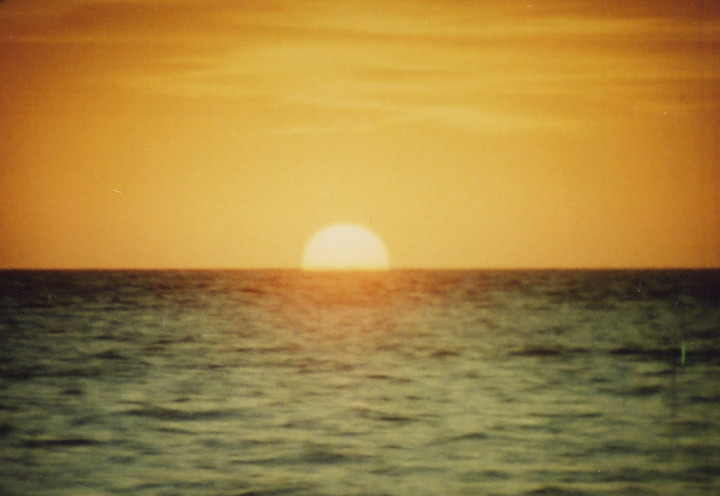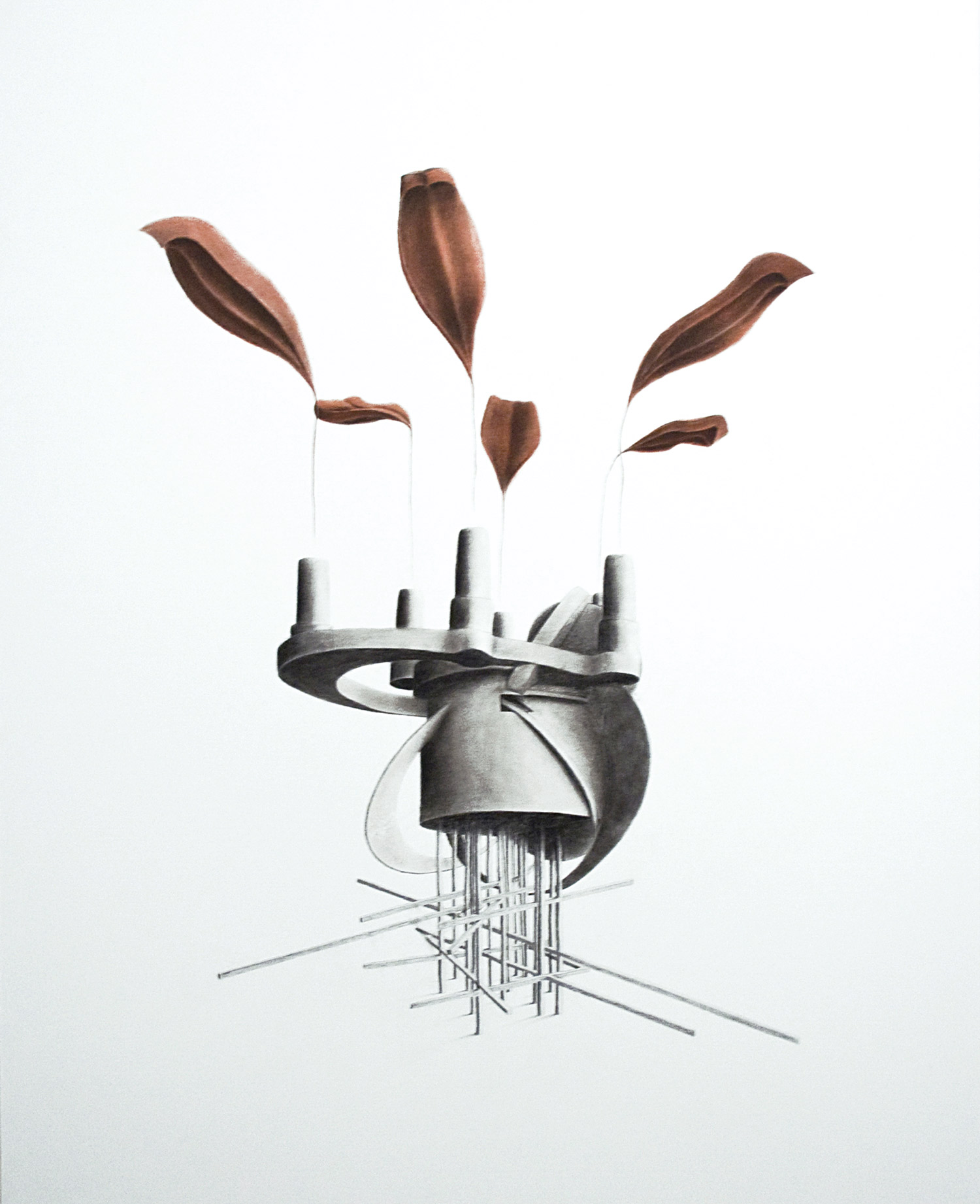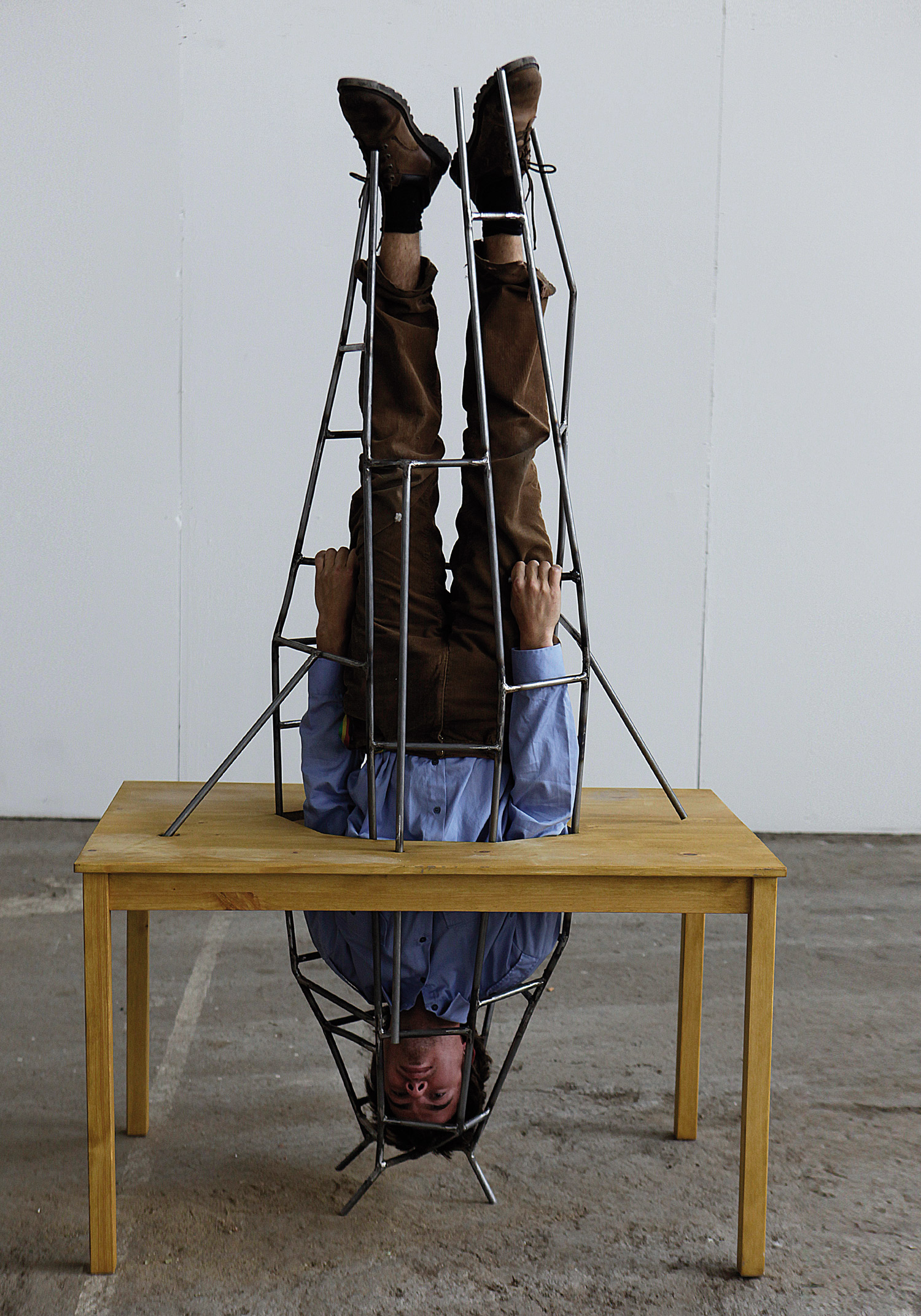
Time is a tyrant. In Goya’s famous painting, Chronos, the god of time, devours his children: one could see this as a premonition of the 20th century, of what Eric Hobsbawm would call “the short century;” the century without time. Tacita Dean’s work is full of paternal images, images of the elderly; like a reversal of Goya’s painting, her films keep the past alive — children observe their parents, with a gaze that perpetuates their existence. Chronos is preserved by his children.
Last year, 2009, was marked by dozens of celebrations for the 100th anniversary of the Futurist Manifesto. But what was there to celebrate about a movement that condemned us to speed, to the anxieties of modernity, to a hyperkinetic life? Perhaps now, a century later, the role of the avant-garde is to slam on the brakes, slow us down, forcibly stretch out our timeframe. Perhaps the ultimate weapon of the avant-garde is boredom: time stretched to the point of standing still.
During the Spanish Civil War, anarchists would shoot at the clocks on bell towers, almost as if the revolution were about challenging the dictatorship of time. Tacita Dean is an anarchist, but a mild-mannered one: she is literally a woman of a different time.
Bell towers were a 14th century invention; some churches adopted them earlier, some later, but in any case, bell towers made their appearance in European cities just as a new concept of time was taking hold. This cultural transformation is the subject of one of the most extraordinary historical studies ever written, Time, work, & culture in the Middle Ages (1980), by Jacques Le Goff. In it, he quotes a 13th century text: “Augustine says that every creature is obliged to give of itself; the sun is obliged to give of itself in order to shine; in the same way, the earth is obliged to give all that it can produce, as is the water. But nothing gives of itself more in conformity with nature than time; like it or not, every thing has time.” And, one might add, “time has every thing,” because it’s hard to tell who owns whom in this relationship. We talk about “spending time,” but perhaps it is time that spends us, buries and consumes us. In Tacita Dean’s work, the sun gives of itself endlessly. Sometimes it even gives of itself on command, as in the film The Green Ray (2001), presented with a button that lets one activate the sunset sequence at whim. Just push a key, and the sun offers itself up, in real time.

In the spirit of Dean’s films and texts, let me take the time to digress on this oh-so-contemporary expression: real time. What is “real time,” exactly? There’s an ambiguity in the phrase that I’ve always found symptomatic of the confusion our society feels about time. “In real time” can mean “immediately,” like when it’s said that election results are announced in real time. But the same phrase is used to describe events that play out before us slowly, without interruption, implying that the fictional timeframe is just like time in the real world. “That scene is shot in real time…” It is as if our language harbored a deep confusion between immediacy and dilation, speed and slowness. But despite appearances, very few of Dean’s films unfold in real time. Even the longest and most stretched-out are carefully edited; in her films, time is always constructed, never just recorded.
Dean’s work overflows with things that give of themselves freely, that take all the time they need. Her exhibition in Milan, organized by Fondazione Nicola Trussardi, was titled “Still Life” (2009), and was full of objects and creations imbued with time. The title plays on an another intriguing semantic confusion: “still life” means “motionless life,” of course, but can also be read as “life, once again.”
And Stillness is the title of the dance that renowned choreographer Merce Cunningham composed and performed in front of Tacita Dean’s camera. Her six films portray Cunningham, almost at the end of his life, performing for the first time to 4’ 33’’ (1952), a famous composition that consists of four minutes and thirty-three seconds of silence — or perhaps of background noise. There is also a very touching personal subtext, since this score for Cunningham’s immobile dance was composed by John Cage, his lover and partner. Cunningham is dancing to a memory; perhaps he remains motionless to grasp it. Chronos is literally paralyzed, his appetite frozen in time.
Yet time can never be stopped. Watching closely, you will note that the director of the dance company — reflected in a mirror — can be seen signaling to Cunningham at the end of every movement in the score. At each cue, Cunningham changes pose and then remains immobile for the duration of the next movement. When Dean presented the six films that comprise Cunningham performs Stillness… (2008) in Milan, she separated them out in a series of rooms, so that viewers would encounter Cunningham’s image at the beginning and end of the exhibition; it thus became a perfect loop, without inception or conclusion, a film that goes round in circles, endlessly.
Another digression: in the score for 4’33’’, John Cage writes “Tacet” to indicate silence. Tacet, Latin for “it is silent,” has the same root as the artist’s name: Tacita, the silent one. Dean’s work is full of silences that, like Cage’s music, are seething with noise. And even silent films are accompanied by the whir of the projector, spinning like an accelerated clock.

This artist’s entire oeuvre is an allegory of time. The films in Merce Cunningham performs Stillness… are not just the portrait of a great dancer as he performs to a composition by Cage. The director who signals the end of the movements holds a watch in his hand: a young man literally counting out the time that the old man has left. There’s a pitiless expression in Italian, “ha i minuti contati” — literally, “his minutes are counted” — that is used to mean “he’s out of time,” “his days are numbered.” Like in a Renaissance painting, Tacita Dean composes an allegorical portrait that could easily be titled “The Ages of Man.”
Italian artist Gino De Dominicis, at the age of 24, published a famous letter in Flash Art [Flash Art Italia, No. 25-26, June-July 1971], in which he wrote: “To truly exist, we must stand still in time.” And so Merce Cunningham, with the help of Tacita Dean, tries to truly exist, by sitting still, immobile. Watching the close-ups in the film, one can see that Cunningham is struggling not to blink, as if to freeze his gaze. Perhaps this is an exercise in fending off the bulimic consumption of images that is the hallmark of contemporary life. Perhaps immobility is a new form of ecological conservation of the gaze. Tacita Dean’s work is full of images, but slow ones, with an enormous specific weight. I’ve always thought of Tacita Dean as being the Richard Serra of vision: her images are as dense and heavy as gigantic sculptures.
Some of Dean’s films are true monuments; involuntary ones, perhaps, but monuments nonetheless, preserving the image of our fathers and forefathers for eternity. Every time I see one of her films, I think of Virgil, of Aeneas and Anchises, the son bearing his father on his back. Merce Cunningham, Mario Merz, and more recently Giorgio Morandi, are just some of the “fathers” whose images Dean has captured for us. There is another film that clearly addresses this: Human Treasure (2006), the cinematic portrait of a Japanese actor who has achieved legendary status in his country, a sort of living monument. In Dean’s film, we watch him walking around, eating, acting. He is a monument who does nothing but exist, but the attentive gaze that Dean trains on him makes us wonder whether existence itself, in all its humdrum, boring simplicity, is what makes our lives so unique. Alfred Hitchcock once said that cinema is life with all the dull bits cut out. But Dean’s films include all the most useless trifles, the dullest details, as if to remind us that this is where life truly lies hidden, within the background noise.
Umberto Eco says that his parents used to take him to the movies when the picture had already started, and that this experience of being plunged into the dark theater wasn’t really all that different from everyone’s experience of life. We stumble into life with the film already underway, and must gradually work out who the protagonists are, who are the extras, reconstruct their bonds of friendship and kinship. The only thing we know for certain is that, sooner or later, it will be over. Perhaps cinema attracts us precisely because it is a story that resembles life, but gives us the chance to see the beginning and end. Dean’s films foil this expectation of clarity however: like the cinema of the origins, they reject the concept of plot, and thus are more like a tapestry. They are less reassuring, and it is easier to lose oneself in them; they are life that is still a chaos to be unraveled, a discovery to be made.

Another enchanting coincidence: the person who manages Giorgio Morandi’s estate is a gentleman who as a child would visit the painter in his studio to tell him the plots of movies, because Morandi didn’t like going to the cinema. Undoubtedly, he had no interest in cinema because too many things happen in films, because the images cannot filter out into metaphysical purity. Tacita Dean was the first person to bring a movie camera into Morandi’s studio, and came out with two brief, intense films, presented for the first time in the exhibition organized by Fondazione Trussardi in Milan.
For his entire life, Morandi played an extenuating chess game with his objects, his bottles, jugs and boxes. While Duchamp ushered in the 20th century with his focus on trivial, aseptic objects, Morandi explored the secret magic that objects preserve when they become part of our lives, when, as if by osmosis, they turn into mirrors of our identity. Tacita Dean filmed Morandi’s objects in a way Morandi himself would never have painted them: crowded together under artificial light, like a family album of the painter’s nearest and dearest.
In another brief work, Still Life (2009), Dean filmed the sheets of paper where Morandi traced the position of his objects, moving them around in search of the perfect composition. These sheets are crisscrossed with hundreds of marks and lines, showing the infinite possible combinations that led to each still life. As far as I know, this is the first time they have been made public: an important contribution to art history, but also a unique testament to a lifetime devoted to painting. Morandi’s involuntary drawings — his “accidental Twomblys,” as Dean calls them — are the cartography of an obsession, maps of an immobile existence spent between the four walls of a studio, weaving arabesques in an attempt to sort out that infinite chaos that is life.





